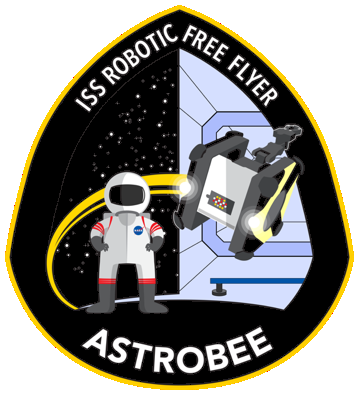 |
NASA Astrobee Robot Software
0.19.1
Flight software for the Astrobee robots operating inside the International Space Station.
|
 |
NASA Astrobee Robot Software
0.19.1
Flight software for the Astrobee robots operating inside the International Space Station.
|
The import_map tool is used to import a map from the NVM format, which Theia and other SfM packages export to, to Astrobee's .map format. The Exporting a map to the .nvm format program does the reverse operation.
It is assumed that the NVM map was built with nav_cam images, which were either undistorted or distorted (original ones), and that the name of the robot which acquired the images is known.
In either case, the NVM file does not store descriptors, so a map needs to be rebuilt after it is imported.
Run:
export ASTROBEE_ROBOT=bumble astrobee/devel/lib/sparse_mapping/import_map \ -input_map map.nvm -output_map map.map
The nvm file normally stores distorted interest points which are shifted relative to the optical center. The import operation unshifts these points, undistorts them, and shifts them relative to unidstored image center, per Astrobee sparse map conventions.
If the interest points are saved with no shift relative to the optical center (such as done by export_map -no_shift), then invoke on importing the-no_shift`` option as well. The rest of the operations, of undistortion and shifting relative to the undistorted image center will still take place.
See further down about how to rebuild the imported map.
There are two cases to consider.
Run:
export ASTROBEE_ROBOT=bumble astrobee/devel/lib/sparse_mapping/import_map \ -undistorted_camera_params "wid_x wid_y focal_len opt_ctr_x opt_ctr_y" \ <undistorted images> \ -input_map map.nvm -output_map map.map
It is very important that the robot name be specified corretly.
It is assumed that the images were acquired with the nav camera of the robot given by $ASTROBEE_ROBOT and undistorted with the Astrobee program undistort_image. The undistorted camera parameters to use should be as printed on the screen (and saved to disk) by undistort_image.
If desired to replace on importing the undistorted images with the original distorted ones, and same for the camera parameters, as it is usually expected of a sparse map, the above command should be called instead as:
export ASTROBEE_ROBOT=bumble astrobee/devel/lib/sparse_mapping/import_map \ -undistorted_images_list undist_list.txt \ -distorted_images_list dist_list.txt \ -input_map map.nvm -output_map map.map
Here, the files undist_list.txt and dist_list.txt must have one image per line and be in one-to-one correspondence. It is important that both undistorted and distorted images be specified, as the former are needed to look up camera poses and other data in the .nvm file before being replaced with the distorted ones.
This use case was tested only with a map exported by Theia, which records the images without a directory path, so that is how they should be specified in the undistorted image list as well.
It is very important to note that the interest point matches will not be correct, as they are left undistorted. Only the image names, robot camera parameters, and camera poses will be accurate. So, this map should be rebuilt right away.
To rebuild an imported map while keeping the camera poses read from the nvm file, run:
export ASTROBEE_ROBOT=bumble build_map -rebuild -rebuild_detector SURF \ -output_map map.map
To also reoptimize the camera poses, add the option:
-rebuild_refloat_cameras
Do not use this option with the BRISK detector, as this detector may not create enough features for the camera poses to be optimized correctly.
Note that if the NVM file is created by Theia, it may have the image names be specified without the path to the directory having them (that is, instead of image_dir/image1.jpg it may list just image1.jpg). Then this NVM file needs to be edited manually to add the correct path to the images before running the import tool. This is taken care of if both -undistorted_images_list and -distorted_images_list are specified.